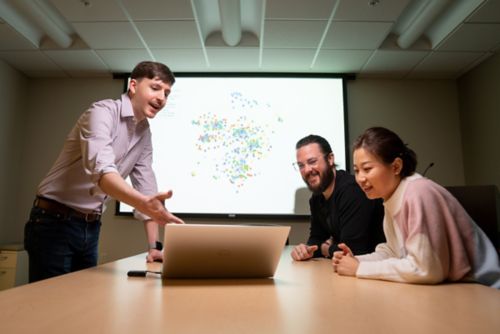About the Geeleher Lab
The development of new genomics/transcriptomics technologies (e.g. single-cell RNA-seq, spatial transcriptomics) generally outpaces the development of computational methodologies for appropriately dealing with the resulting data. Our lab is focused on developing generalizable computational approaches that can be applied to understand human tissue heterogeneity, then nominating new vulnerabilities by the intersection of these datasets with data from large preclinical screening efforts. We use these insights to design comprehensive studies of the most promising novel therapeutics and drug combinations. While much of our computational work has broad applicability across many human diseases, our own wet lab focuses primarily on pediatric neuroblastoma.

Our research summary
In the last 5 years, vast strides have been made in our ability to study human tissue heterogeneity using high-throughput genomics technologies like single cell and spatial transcriptomics. In parallel, we have gained the ability to screen very large numbers of preclinical disease models (including cell line panels) with pharmacological agents or CRISPR/Cas9 gene editing. However, , while screening in cell lines is highly scalable and has yielded clinically impactful findings across many diseases, the fidelity of these models is often unclear and the computational infrastructure to determine which (if any) components of human tissues are recapitulated by various preclinical models has not been developed. The overall goal of our lab is to develop the computational infrastructure that allows the results from preclinical screening to be interpreted in the context of a detailed understanding of human tissue biology, and in understanding this relationship to nominate new opportunities for drug repurposing, the development of new drug targets and new drug combinations. The primary computational tools we use for this purpose are that of unsupervised and supervised machine learning, applied to data from leading edge genomics technologies like single-cell and spatial genomics. While the computational work is highly generalizable, we specifically use these unique computational skills to push forward our own clinical translational and wet-lab mechanistic work focused on neuroblastoma.
Selected Publications
Contact us
Paul Geeleher, PhD
Assistant Member, Computational Biology
Department of Developmental Neurobiology
MS 1135, Room IA6052
St. Jude Children's Research Hospital
Follow Us

Memphis, TN, 38105-3678 USA GET DIRECTIONS